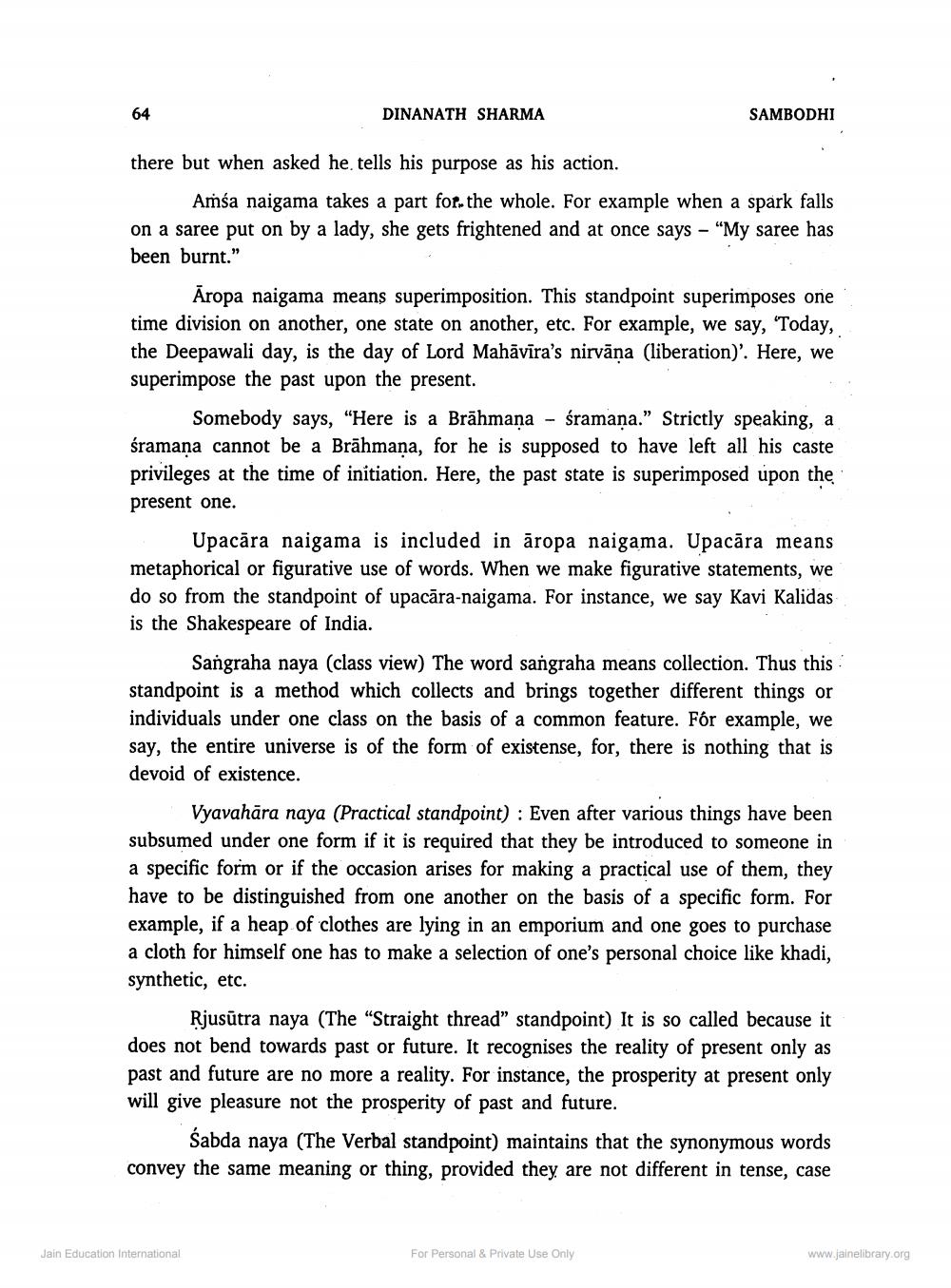________________
64
DINANATH SHARMA
SAMBODHI
there but when asked he tells his purpose as his action.
Amúa naigama takes a part for the whole. For example when a spark falls on a saree put on by a lady, she gets frightened and at once says – "My saree has been burnt."
Āropa naigama means superimposition. This standpoint superimposes one time division on another, one state on another, etc. For example, we say, 'Today, the Deepawali day, is the day of Lord Mahāvīra's nirvana (liberation)'. Here, we superimpose the past upon the present.
Somebody says, "Here is a Brāhmana - śramana." Strictly speaking, a śramana cannot be a Brāhmana, for he is supposed to have left all his caste privileges at the time of initiation. Here, the past state is superimposed upon the present one.
Upacāra naigama is included in āropa naigama. Upacara means metaphorical or figurative use of words. When we make figurative statements, we do so from the standpoint of upacāra-naigama. For instance, we say Kavi Kalidas is the Shakespeare of India.
Sangraha naya (class view) The word sangraha means collection. Thus this standpoint is a method which collects and brings together different things or individuals under one class on the basis of a common feature. For example, we say, the entire universe is of the form of existense, for, there is nothing that is devoid of existence.
Vyavahāra naya (Practical standpoint) : Even after various things have been subsumed under one form if it is required that they be introduced to someone in a specific form or if the occasion arises for making a practical use of them, they have to be distinguished from one another on the basis of a specific form. For example, if a heap of clothes are lying in an emporium and one goes to purchase a cloth for himself one has to make a selection of one's personal choice like khadi, synthetic, etc.
Rjusūtra naya (The “Straight thread” standpoint) It is so called because it does not bend towards past or future. It recognises the reality of present only as past and future are no more a reality. For instance, the prosperity at present only will give pleasure not the prosperity of past and future.
Sabda naya (The Verbal standpoint) maintains that the synonymous words convey the same meaning or thing, provided they are not different in tense, case
Jain Education International
For Personal & Private Use Only
www.jainelibrary.org




